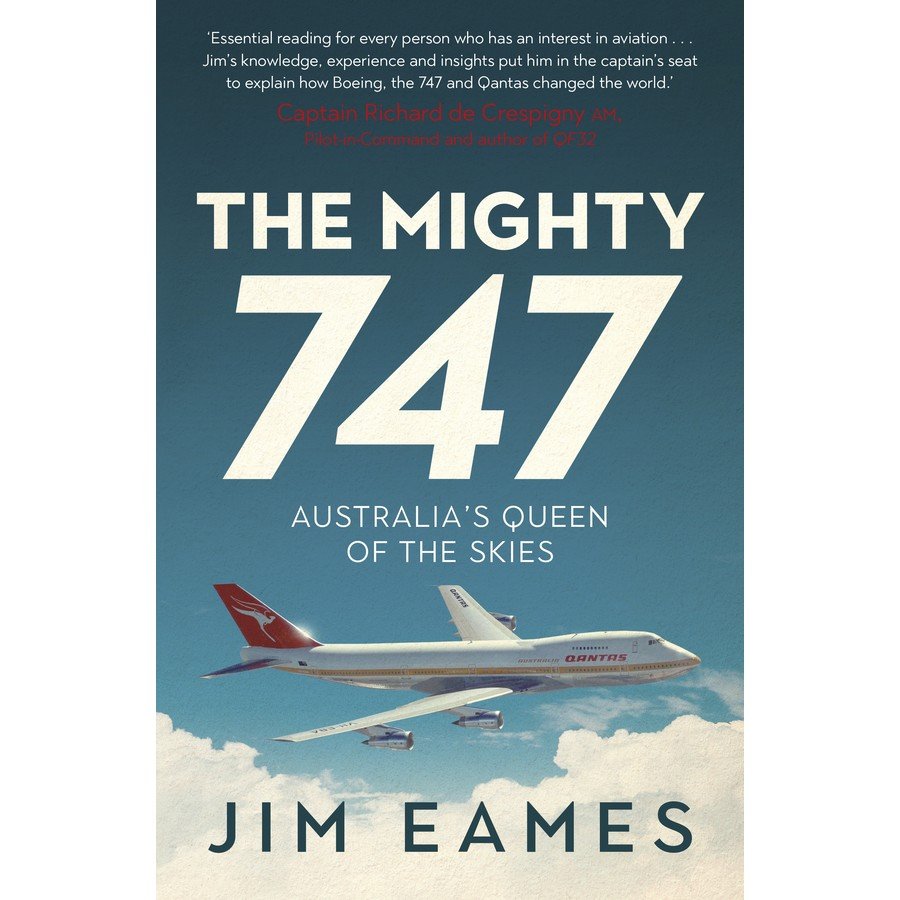Review of ‘The Mighty 747’ by Jim Eames
‘The Mighty 747’ by Jim Eames
Released on: November 1st, 2022
Publisher: Allen & Unwin
🛫
What the book is about, as stated by the publisher.
The world's most iconic commercial aircraft, the Boeing 747, and its Australian story.
'We have decided we must have the 747.' - Bert Ritchie, Qantas Chief Executive, 1967
From its first Qantas flight in 1971, the Boeing 747 brought millions of people to Australia, overseas for work, back to their homelands, to holiday destinations, and out of danger.
In The Mighty 747, Jim Eames - author of The Flying Kangaroo and Courage in the Skies - traces the early development of the jumbo, an aircraft of unprecedented size, and the vision of Joe Sutter, the man who guided it into existence. A major watershed in aviation technology, the 747 has flown over 3.5 billion passengers, and over the next few years is scheduled to be phased out around the world.
In this jet-set nostalgia journey we see how the 747 dramatically changed travel from Australia, offering fares cheap enough to be within reach for the first time for migrants and their children to revisit home, and the plane's extensive teething problems, but also the people in Qantas who had the vision to see the jumbo through those difficulties to be a massive success.
We see the high points of its Qantas life - the uplift out of Darwin after Cyclone Tracy, out of China after Tiananmen Square, in more recent days from Wuhan and the coronavirus outbreak, and its role in charters to the Antarctic. We discover how the 747 came in all shapes and sizes - from a Combi for cargo and passengers to the Special Performance version which could fly non-stop to the USA, and eventually the 747-400 which created a world distance record on its delivery flight from London to Sydney in 1989. We also find out about the 'near misses', of how close we have come to disaster on several occasions. And finally the jumbo's nostalgic farewell and how it departed Australia's skies for the last time on 22 July 2020.
So much more than aircraft history, The Mighty 747 is woven with the humour and nostalgia of the people at Qantas who sold the 747 to Australia, serviced it and made it work on the ground and in the air.
'Jim Eames takes us on the journey of the Boeing 747, the plane that dominated international travel. A former leader in the airline that bet its (and Australia's) future on the 747s, Jim guides us through the jet's remarkable design, construction and operations that put Australia on the world's stage. The Mighty 747 is essential reading for every person who has an interest in aviation, and Jim's knowledge, experience and insights put him in the captain's seat to explain how Boeing, the 747 and Qantas changed the world.' - Captain Richard Champion de Crespigny, Pilot in Command and author of QF32
About the author: Jim Eames
Jim Eames has been involved with airlines since he began work as an aviation writer in the 1960s. He has been a ministerial press secretary and aviation adviser to governments and a senior executive with Qantas. He is the author of nine books including Taking to the Skies: Daredevils, heroes and hijackers, Australian flying stories from the Catalina to the Jumbo, The Flying Kangaroo: Great untold stories of Qantas . . . the heroic, the hilarious and the sometimes plain strange and Courage in the Skies: The untold story of Qantas, its brave men and women and their extraordinary role in World War II.
✈️
MY REVIEW
Rating: 5 Stars ⭐️⭐️⭐️⭐️⭐️
Many thanks to Allen & Unwin for my review copy.
____________________________

